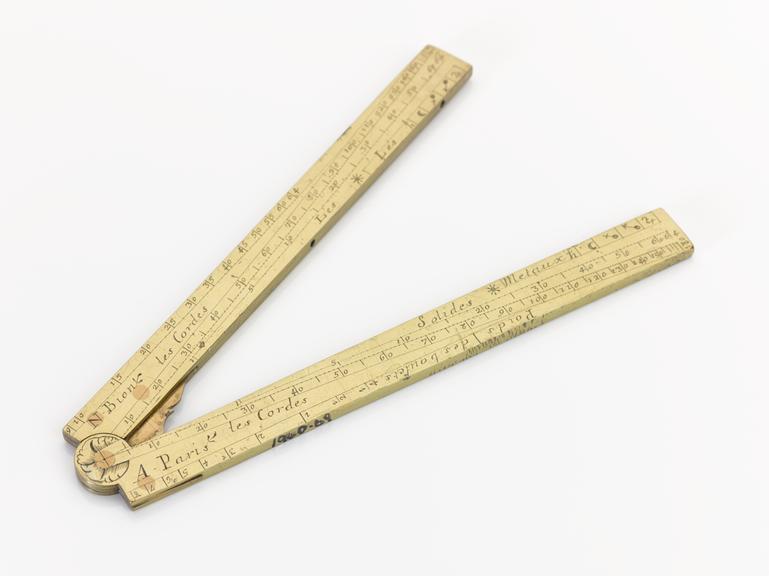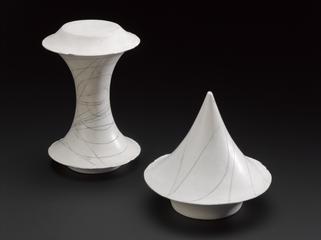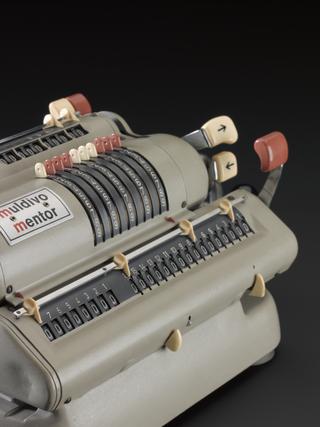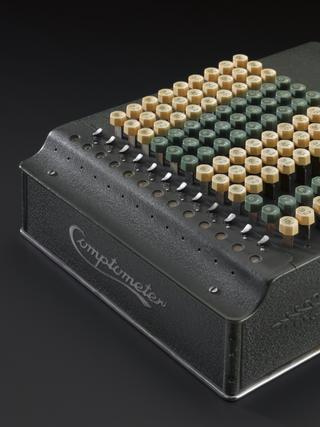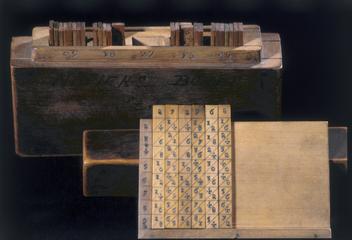
Sector by Bion
- maker:
- Nicolas Bion


12-inch brass sector made by Nicolas Bion, Paris, 1700-1720. Signed "N.Bion A Paris". Hinge decorated with a foliate rose.
This sector is engraved of 8 scales, 4 on each side. On the signature side: “Poids des boulets” (1/4 to 64); “les Cordes” (0 to 180); “Les Solides” (1 to 64) and “Les Metaux” (gold, lead, silver, copper, iron and tin using alchemical symbols). On the other side: “Calibres des pieces” (1/4 to 64); “Les Parties Egales” (0 to 200); “les plans” (1 to 64) and “Les Poligones” (3 to 12).
A sector is mainly used to calculate proportions between two entities or equivalences. It can also be used to draw polygons and various figures, to calculate square and cubic roots, measure angles, enlarge or reduce a scheme or a map, evaluate weights of compounds made of different metals, size of cannonballs. This instrument is made of two legs (flat rules) joined together by a hinge. The legs are usually engraved of 6 to 9 scales very useful for all professions. A sector is always used with a dividers.
Details
- Category:
- Mathematics
- Object Number:
- 1940-69
- Materials:
- brass (copper, zinc alloy)
- Measurements:
-
overall (closed): 28 mm x 173 mm x 3 mm, .168 kg
overall (open): 21 mm x 330 mm x 3 mm,
- type:
- proportion drawing instruments and sectors
- credit:
- Sotheby and Compan
